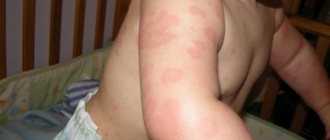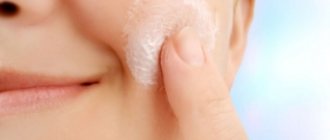If an adult develops an allergic reaction to the epidermis, negative symptoms are sure to appear. For example, rash, irritation, blisters, blisters. If timely therapy is not provided, antigens continue to accumulate, which can lead to a systemic reaction. A dangerous condition is Quincke's edema, which leads to an attack of suffocation and death. Urticaria has negative symptoms. To eliminate the condition, it is necessary to use medicinal ointments containing antihistamines and steroids. They have positive and negative sides.
Types of allergies
Depending on the allergen, the following types of allergies are distinguished:
- allergy to pollen (hay fever);
- food allergies;
- for insect bites;
- animal hair;
- medicines;
- chemical irritants (for example, household chemicals);
- other types of allergies (to alcohol, sun, cold, etc.).
Figure 1. Types of allergies. Image: inspiration/freepik.com
Causes of allergies
The cause of an allergy is an allergen. Science and medicine figured this out a long time ago. As for the reasons for increased sensitivity to a particular substance, there are many mysteries. For an unknown reason, excessive activation of immune cells (mast cells and basophils) occurs in response to the appearance of an allergen in the body. An inflammatory process is initiated, which can be mild (runny nose, lacrimation, itching) or life-threatening (anaphylactic shock, Quincke's edema).
In developed countries, a constant increase in the number of allergy sufferers is recorded. The exact reason for this phenomenon has not yet been established. Today, the dominant theory in this sense is the hygienic theory¹. It was put forward by David Strachan in 1989. According to this hypothesis, excessive hygiene leads to an undertaxed immune system. As a result, the immune system begins to react to harmless antigens such as plant pollen or animal fur.
Cromoglycic acid - “non-emergency” antiallergic help
Cromoglicic acid and its derivatives stabilize mast cell membranes, preventing the opening of calcium channels and the release of calcium into mast cells. Thanks to this, the degranulation of mast cells is inhibited, which prevents the release of histamine, leukotrienes and other biologically active substances that mediate allergic inflammation.
An important aspect that concerns all cromoglycates is the slow onset of clinical effect. In this regard, it is more advisable to use them for the prevention of hay fever, rather than for its treatment.
For allergic reactions, cromoglycic acid preparations are used in the form of nasal spray and eye drops.
Cromoglycates, as well as other new generation allergy drugs, have a strong evidence base confirming their effectiveness and high safety profile [5].
Most cromoglycic acid drugs belong to the OTC group. But there are also exceptions. Thus, some eye drops are dispensed by prescription from a doctor, therefore, when offering TN to the buyer, it is important to study the instructions and clarify which group a particular drug belongs to.
Nasal spray
can be recommended for the treatment and prevention of hay fever in adults and children over 5 years of age. The therapeutic effect develops after several days or even weeks of constant use of the drug. On average, the course of treatment lasts 4 weeks, and drug withdrawal should be carried out gradually, over another 7 days [2].
Eye drops
, like the nasal spray, exhibit a noticeable therapeutic effect only a few days after the start of use. Prescribed to relieve the symptoms of allergic conjunctivitis in adults and children over 4 years of age.
What should I warn the client about?
After the therapeutic effect is achieved, you can reduce the dose of both the nasal spray and nasal drops, using them only when in contact with allergens, such as pollen. Do not forget to talk about the need for slow withdrawal of cromoglycic acid medications.
«
Classification of allergy drugs
The most common allergy medications are antihistamines. Histamine is a mediator of allergic reactions. It binds to receptors on the skin, mucous membranes, blood vessels and smooth muscles. Such binding leads to swelling of the nasal mucosa, bronchospasm, skin and intestinal reactions.
Antihistamines bind to histamine receptors, blocking them. Thus, histamine is not able to realize its allergenic effect. All antihistamines are divided into 3 groups:
- 1st generation drugs. The earliest class of antihistamines. Such medicines act quickly and effectively. However, their effect is short-lived, requiring two or three doses per day. Another significant drawback of such drugs is the sedative effect. The patient becomes sleepy after such remedies. Therefore, they should not be taken if you are driving or working in a hazardous industry.
- 2nd generation drugs. These medications have a longer duration of action. As a rule, this is 12-24 hours. Therefore, they are taken 1-2 times a day. Another advantage of 2nd generation antihistamines is a relatively small number of side effects. They do not cause drowsiness, which means they can be used by drivers and people who work in potentially hazardous industries.
- 3rd generation drugs. These are the newest allergy drugs, which are metabolites of the active substances of the 2nd generation. It is believed that such drugs are more effective and safer, but the medical community does not yet have enough data on this matter.
It is impossible to unequivocally answer which drugs are the best for each patient. In case of allergies, drug treatment is carried out taking into account the exact diagnosis, the presence of sensitivity, the patient’s current diseases and a number of other factors. Therefore, the best remedy for allergies is the one that helps you quickly and effectively cope with the body’s abnormal reaction to the allergen.
Allergen test. Photo: alexraths/Depositphotos
Positive aspects of ointments
Positive effects of ointments to eliminate inflammation and allergic reactions:
- rapid effect on the lesion;
- immediate anti-inflammatory effect, eliminating redness, swelling, pain;
- relieving any kind of discomfort, which has a beneficial effect at night;
- moisturizing effect, eliminating cracked, dry areas of the skin;
- reducing the risk of complications such as bacterial infection;
- activation of regenerative processes;
- reducing the risk of relapse;
- availability of drugs, ease of use.
Most ointments with antihistamine and anti-inflammatory effects can be used in combination therapy with other drugs. But first consult with a doctor to prevent cross-interaction of active ingredients.
TOP allergy drugs
Below we look at the 15 most common active ingredients against allergies. Please note that the name of the active substance often does not coincide with the name of the medicine.
Chloropyramine
Generation: first
Trade names: “Suprastin”, “Suprilamin”, “Suprivell”, “Gistaprim”, “Chloropyramine”.
Chloropyramine is mainly available in tablets. But there are also forms for intramuscular administration. The drug has a pronounced antihistamine effect. Relief occurs within 15-30 minutes after administration². After an hour, the maximum concentration of the drug in the blood is reached.
Chloropyramine-based medications usually work within 4-6 hours. Such products not only block the production of histamine, but also relieve swelling and itching. Chloropyramine also has an inhibitory effect on the central nervous system (calming and sedative effects).
Contraindications: hypersensitivity to the components of the drug, severe forms of prostate adenoma, pregnancy and breastfeeding.
Clemastine
Generation: first
Trade names: “Tavegil”, “Clemastin”, “Clemastin-Eskom”.
Preparations with clemastine are available in tablets, syrups and solutions for intramuscular administration. This is an over-the-counter medicine that works within 8-12 hours.
Clemastine is used to suppress acute allergic reactions. Also used in the complex treatment of anaphylactic reactions.
Contraindications: hypersensitivity to the components of the drug, age under 6 years (tablets) or under 1 year (syrup or injections), pregnancy, breastfeeding.
Loratadine
Generation: second
Trade names: “Claritin”, “Klarnedin”, “LoraGexal”, “Clarifer”, “Erolin”, “Clarotadine” and others.
Loratadine helps cope with the classic symptoms of allergies - sneezing, itching and runny nose³. The therapeutic effect of the drug occurs quickly, after 30-40 minutes and lasts up to 24 hours.
Side effects of loratadine include headache (in 12% of cases), drowsiness (8%), fatigue (4%). In rare cases (less than 2%), loratadine impairs concentration.
Contraindications: hypersensitivity to the components of the drug, children under 2 years of age.
During pregnancy, loratadine is taken if the expected benefit outweighs the potential risk to the fetus.
Figure 2. Allergy symptoms. Image: inspiration/freepik.com
Cetirizine
Generation: second
Trade names: “Zirtec”, “Zintset”, “Alerza”, “Zodak”, “Parlazin”, “Cetirizine”, “Solonex” and others.
Cetirizine has a long-lasting antiallergic effect and is practically free of sedative effect. The drug relieves swelling and itching. During the flowering season, cetirizine preparations can also be used for preventive purposes.
The most common form for cetirizine is tablets. Also available in the form of drops. Used to relieve nasal, eye and skin allergy symptoms.
Contraindications: hypersensitivity to cetirizine, late stage of renal failure. Cetirizine in the form of drops is not prescribed to children under 6 months. Tablet forms of the drug are allowed from the age of 6 years. Cetirizine should not be used during pregnancy due to the lack of clinical studies regarding its safety in pregnant women.
Desloratadine
Generation: third
Trade names: “Erius”, “Espontin”, “Lordestin”, “Nalorius”, “Delorsin”, “Desloratadine”, “Dezal”, “Blogir-3” and others.
Medicines based on desloratadine are available in the form of tablets or syrup. The active substance has a long-term antiallergic and anti-inflammatory effect, which lasts up to 24 hours.
Desloratadine is used to treat seasonal and perennial allergic rhinitis and urticaria.
Contraindications: hypersensitivity to the components of the drug, pregnancy and breastfeeding. The syrup should not be taken by children under 1 year of age, and tablet forms of the drug should not be taken by children under 12 years of age.
What to do if you don’t have the drug at hand?
- Even disciplined allergy sufferers (who always carry the necessary medications with them) can find themselves in a situation where there is no life-saving remedy at hand. In such situations, you need to act depending on the type of allergy:
- For allergies to pollen. Rinse your eyes, face and hair. Change clothes as quickly as possible. A lot of pollen settles on hair and clothes.
- For food allergies. Drink more water. If the allergic attack does not subside, induce vomiting.
- If you are allergic to an insect bite. To relieve swelling and inflammation, apply something cold to the bite. This can be a bottle of cold water or a towel soaked in water. If you have ice on hand, wrap it in a cloth and apply it to the bite. Do not apply ice to bare skin!
Diphenhydramine
Generation: first
Trade names: "Diphenhydramine".
Diphenhydramine is available in the form of tablets, gels and solutions for intramuscular administration. The drug is used for a wide range of allergic diseases, including hay fever, vasomotor rhinitis, urticaria, anaphylactic shock and others. Diphenhydramine is also used in the treatment of bronchial asthma, gastric ulcers, sea and airborne illnesses.
Preparations in the form of a gel are used to treat skin allergic diseases and sunburn.
Contraindications: hypersensitivity to the components of the drug, breastfeeding, childhood (newborn period).
Important!
Drugs containing diphenhydramine are used with caution in glaucoma, pregnancy and prostate adenoma. In such cases, the doctor assesses the potential risks of the drug, on the basis of which he decides whether to prescribe the medicine or not.
Ebastine
Generation: second
Trade names: “Ebastine”, “Espa-Ebastine”, “Kestin”, “Zirtal-10”.
Products with ebastine are used for allergic rhinitis, chronic urticaria and diseases with high histamine release.
Contraindications: hypersensitivity to the drug, pregnancy, age under 12 years.
Mebhydrolin
Generation: first
Trade names: "Diazolin".
Diazolin is available in tablets or dragees. It is effective for allergic rhinitis, hay fever, allergic conjunctivitis and skin allergic manifestations. It is also used in the complex treatment of itchy dermatoses.
Contraindications: hypersensitivity, exacerbation of gastric and duodenal ulcers, inflammatory diseases of the digestive system, prostate adenoma.
Astemizole
Generation: second
Trade names: “Gistalong”, “Asmoval 10”, “Mibiron”, “Stemiz”.
Preparations containing astemizole are available in the form of tablets and suspensions. Used for nasal, eye and skin allergic reactions. Also used for adjuvant therapy of bronchial asthma.
Contraindications: hypersensitivity, pregnancy and breastfeeding, children under 2 years of age.
Allergy medicine should be in every first aid kit. Photo: ufabizphoto / freepik.com
Promethazine
Generation: first
Trade names: "Pipolfen".
Promethazine is used for a wide range of allergic reactions. These are numerous skin manifestations, drug allergies, asthmatic bronchitis, anaphylactic and anaphylactoid reactions. The drug is also used for rheumatic lesions, neuralgia, neurosis-like conditions and psychoses.
Contraindications: hypersensitivity, coma, combination with monoamine oxidase inhibitors (MAO). Promethazine should not be taken in a state of alcohol intoxication, renal or liver failure. The drug is prohibited during pregnancy, breastfeeding and in early childhood under 6 years of age.
Hormonal medications for allergies
For allergies, not only antihistamines are used, which our material is devoted to.
In severe forms of an allergic reaction, corticosteroids are also used to relieve the inflammatory process. These are hormonal anti-inflammatory drugs that have a pronounced effect. Corticosteroids are prescription medications that can only be prescribed by a doctor. They are used to relieve bronchospasms, skin lesions and nasal congestion. They are produced in the form of tablets, sprays, ointments, as well as solutions for injections.
Levocetirizine
Generation: third
Trade names: “Xizal”, “Suprastinex”, “Glenset”, “Cetrin”, “Zodak”, “Elcet”.
Levocetirizine is available in the form of tablets and drops. Used for year-round and seasonal allergic rhinitis and conjunctivitis. The drug is effective for hay fever, urticaria, and allergic skin diseases.
Contraindications: hypersensitivity to levocetirizine, cetirizine, hydroxyzine and other piperazine derivatives. The drug should not be taken in case of end-stage renal failure, as well as in children under 2 years of age (drops) and 6 years of age (tablets).
Akrivastine
Generation: second
Trade names: Semprex.
Akrivastine is available in capsule form. The medicine is used against allergic rhinitis, as well as allergic skin reactions. The sedative effect is weak. However, in rare cases, such a side effect does occur (like insomnia). The antihistamine effect of acrivastine lasts approximately 12 hours.
Contraindications: hypersensitivity, pregnancy and lactation, children under 12 years of age, severe renal failure.
Azelastine
Generation: first
Trade names: “Azelastine-Xantis”, “Allergodil”.
The drug is available in the form of a nasal spray and drops (nasal and eye). Used to treat seasonal or year-round allergic rhinitis and conjunctivitis.
Contraindications: hypersensitivity to the drug, pregnancy, breastfeeding. Eye drops should not be used by children under 4 years of age, and sprays and nasal drops by children under 6 years of age.
Dimetinden
Generation: first
Trade names: “Fenistil”, “Phenicitol”, “Dimetinden”, “Allergolan”, “Akristil”.
Antiallergic drugs based on dimethindene are used for external use and oral administration. Available in the form of drops, capsules, gels and emulsions.
Capsules and drops for internal use are prescribed for hay fever, urticaria, eczema, angioedema, food and drug allergies, as well as reactions to insect bites.
Gels and emulsions for external use are used for itchy dermatoses, urticaria, and burns.
Contraindications: hypersensitivity, 1st trimester of pregnancy, newborn period.
Fexofenadine
Generation: third
Trade names: “Allegra”, “Fexofast”, “Telfast”, “Fexadin”, “Fexofen”.
Fexofenadine is produced in the form of tablets, capsules and drops. It is used to treat urticaria, itching, and allergic symptoms of the upper respiratory tract4.
Contraindications: hypersensitivity to the components of the drug, children under 6 years of age.
Who are hormonal medications indicated for?
Ointments containing corticosteroid hormones are prescribed in allergy clinics only according to strict indications. Penetrating into the blood, the substances inhibit the function of the adrenal glands. Even new generation drugs, in which side effects are minimized, lead to dryness, thinning and atrophy of the skin, active hair growth, the appearance of stretch marks and acne. They can be used for up to 10-12 weeks for adults and no more than 3-4 weeks for children.
Most often prescribed:
- flucinar - a glucocorticoid in the form of an ointment or gel to relieve inflammation in urticaria;
- hydrocortisone ointment - for eczema, psoriasis, dermatitis;
- advantan - especially effective for weeping allergic dermatitis, including among children from 4 months;
- elocom is a new generation drug that has virtually no systemic side effects.
Along with mono-drugs, there are also combination drugs, which include corticosteroids, antifungal and antibacterial agents. They are prescribed for secondary infection or when the risk of complications is high. Due to the wide variety of remedies, you should not self-medicate local manifestations of allergies: many drugs are not as harmless as they might seem. In addition, local treatment will only be effective in combination with systemic treatment - against the backdrop of hypoallergenic living conditions.
Sources
1. Scudellari M. (2017).
News Feature: Cleaning up the hygiene hypothesis. Proceedings of the National Academy of Sciences of the United States of America, 114(7), 1433–1436. https://doi.org/10.1073/pnas.1700688114 2. State register of medicines. Instructions for use of the drug for medical use CHLOROPYRAMINE https://grls.rosminzdrav.ru/ImgInstr.aspx?folder=ScanVavilova&Filepath=\Vneseno_v_Grls\454954\IP&idReg=160167&isOld=1&fileType=jpg&pfolder=2
3. Tenn MW, Steacy LM, Ng CC, Ellis AK. Onset of action for loratadine tablets for the symptomatic control of seasonal allergic rhinitis in adults challenged with ragweed pollen in the Environmental Exposure Unit: a post hoc analysis of total symptom score. Allergy Asthma Clin Immunol. 2018;14:5. Published 2022 Jan 16. doi:10.1186/s13223-017-0227-4
4. Axelrod, David, and Leonard Bielory. “Fexofenadine hydrochloride in the treatment of allergic disease: a review.” Journal of asthma and allergy vol. 1 19-29. 19 Sep. 2008, doi:10.2147/jaa.s3092









